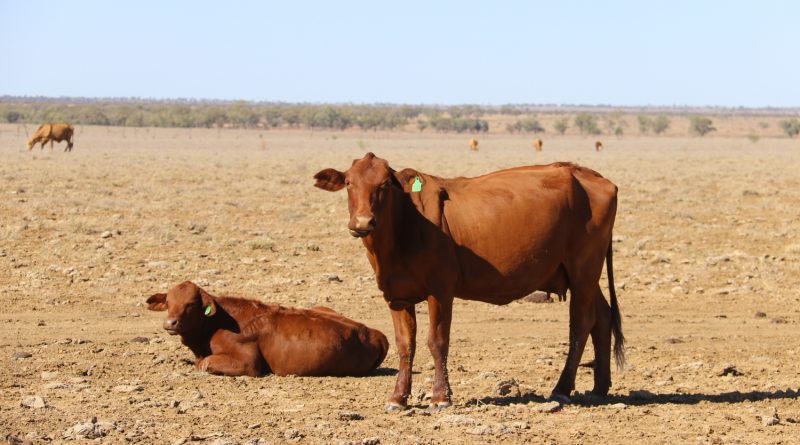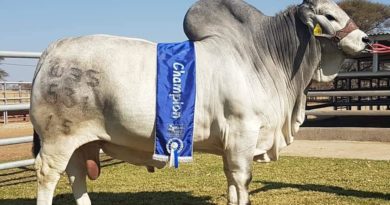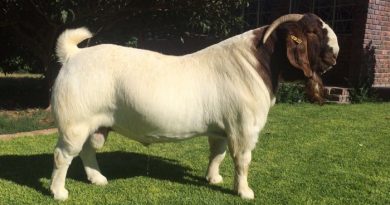Seven years without rain – Australia’s relentless drought
Australia is currently experiencing its worst drought in living memory. In fact, currently about three-million-square kilometres of land is in drought – that’s more than five times the land mass of Botswana. Lydia Burton, Australian Broadcasting Corporation’s Northern Territory Country Hour Producer reports.
So how bad is the drought?
In some parts of the world’s sixth largest country, it hasn’t rained properly for seven years. That doesn’t mean that it hasn’t rained at all, but rather, some areas haven’t received anywhere close to their average rainfall (the amount of rain needed to produce grass) for seven years. That is the most extreme situation – in other parts of the country it’s been months without rain.
So, you must be wondering how the country is still functioning? Well, droughts are nothing new for Australia, so farmers have developed different ways to manage them. Farmers with livestock have a few options; they can hold onto their livestock and hand feed them hay and other types of fodder, they can agist them (pay another farmer to run them on their property), or they can sell them.
However, those choices have been reduced this year with more and more of the country suffering from drought. The main difference with this drought compared to others – is its widespread nature. Normally if one area in Australia is suffering, other areas are thriving – given the size of the country. However, this drought is affecting seven out of eight Australian states.
The other major impact from the drought has been on Australia’s crop yields. For the first time in more than a decade, Australia could be forced to import whole grain. This is for a couple of reasons – firstly, the lack of rain and therefore water has meant crop yields have been way down. In fact, some areas didn’t get any harvests at all because there were no winter rains. We even saw wheat die in the fields because they were so parched – that never happens. The second reason for Australia looking to import grain is because of the high demand for it. Currently, with all livestock industries requiring grain to keep stock alive – demand has skyrocketed. Everyone from beef and sheep producers, to feedlots, dairy farmers, egg and poultry producers, from piggeries to horse studs – all facets of agriculture currently require some form of grain to feed their livestock given the paddocks are bare. And with that demand, the price has followed suit. The cost of hay, cottonseed, molasses (popular forms of fodder for livestock in drought), grain – has more than doubled.
The increased feed costs have forced farmers to sell their animals to abattoirs because they are too expensive to hold onto. Currently in Australia we are seeing large numbers of dairy cows sold to meat processors because they are too expensive to feed and the costs aren’t being recovered at the other end, because milk has remained the same price. Recently there were stories of egg producers losing 50 Australian cents (3.83 Botswana Pula) on every single carton of eggs they sold, because in the last six months their cost of production has soared.
What is the long-term effect of all of this?
It’s a question currently being raised in Australia. Our national beef and sheep herd has been heavily diminished after years and years of farmers offloading stock to cope with the drought. We are now starting to see our dairies destock and those cows processed as beef– so next year Australia’s milk supply will dwindle. The same goes for our pork and poultry production, eggs, beef, lamb and so on. Given Australia is normally a large exporter of all these products – the impact globally will be felt if it doesn’t rain soon.
So what is the Australian Government doing to help its farmers?
Our Government offers a range of drought assistance measures. The two big ones for individual farmers are: 1. Offering concessional loans – allowing farmers to take out very low interest loans. 2. the Farm Household Allowance – a small payment to help cover everyday costs – such as food, fuel etc. However, both are rarely accessed due to the large amount of red tape involved. Farmers have cited a number of issues when it comes to accessing this money, but the two common complaints are: that the criteria is too restricted and rules a lot of farmers out due to the asset test; And the large amounts of onerous paperwork that is required makes it too difficult for farmers to apply. Having said that, one of the best forms of drought assistance farmers can access is government subsidies on freight to bring fodder and water into drought affected areas. In fact, there have been calls to increase that further – because it is practical, and anyone can access it.
However, many Australian farmers believe there is not much governments can do in the middle of a drought to help. Instead they would rather see governments invest in helping farmers build drought-proof sustainable business – ie: Governments could invest in water infrastructure such as dams and give farmers access to it to irrigate and grow crops to feed their livestock in dry years. Governments could help in reducing costs for farmers, ie: governments could subsidise farmers’ investments in renewable energy as that would help reduce farmers costs of production – making them more profitable – and at the end of the day the best thing in a drought is for farmers to be profitable so that they can care for themselves in these harsh times because the reality is droughts in Australia are a part of life and only seem to be getting worse.
Much of what has been suggested above is already being done by farmers who are trying to drought proof their businesses. And I guess that is where we are lucky – Australian farmers are innovative and hardy. The good farmers know droughts are a part of farming in Australia – they plan for the bad years by putting away money in the good years and they invest in building sustainable businesses. Farmers are currently looking at new varieties of drought-resistant crops, they are investing in renewable energy, they are diversifying their incomes – getting a job so there is money coming in from somewhere that doesn’t rely on the farm, they are buying in young cattle instead of cows as the young cattle put weight on quickly and have multiple buyers – whereas cows take a long time to get an income from and have limited markets. Australian farmers are starting to accept that if they want to continue to be farmers – they need to change their businesses to suit the harshening landscape.
While droughts are difficult and depressing, in my last five years as a rural journalist reporting on the drought, I have found Australian farmers to be incredibly resilient and optimistic. In fact, one of the most common quotes from Aussie farmers in this drought has been “every day is one day closer to rain”. And the reality is, yes, it will rain again and when it does Australian farmers, Governments and the wider community will be better equipped to handle them.
To know more about Australia’s ongoing drought – you can visit the ABC Rural website https://www.abc.net.au/news/rural/



